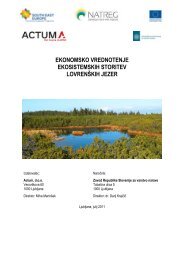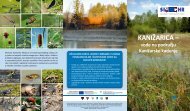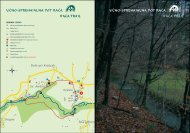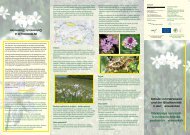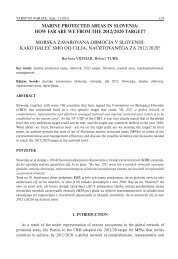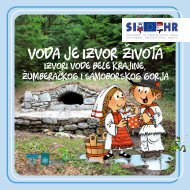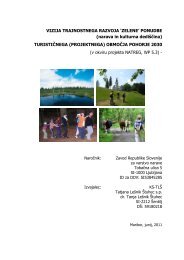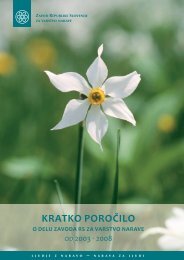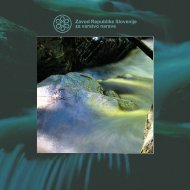Monitoring MPA visitor uses handbook
Monitoring MPA visitor uses handbook
Monitoring MPA visitor uses handbook
- No tags were found...
Create successful ePaper yourself
Turn your PDF publications into a flip-book with our unique Google optimized e-Paper software.
conditions will allow tourist behaviour to be analysed indetail. In turn, a better response (or not) can be providedbased on the needs of certain users and the managementobjectives set. For deep-sea diving for example,the manager may decide to equip several shelteredmooring sites so that clubs can go out diving regardlessof the direction of the wind. By characterizing practicesbased on site weather conditions, managers may alsobe able to anticipate any user conflicts (between swimmersand kite-surfers for instance) by planning activitiesin space and time.5.11 Land-based accommodationcapacity5.11.1 RelevanceThis indicator evaluates the capacity to accommodate<strong>visitor</strong>s in tourist facilities on land (hotels, guest ho<strong>uses</strong>,camp sites, holiday villages, seasonal lettings). <strong>Monitoring</strong>this indicator reveals :• potential tourist numbers in the <strong>MPA</strong>;• development of the touristic function in connectionwith accommodation;• the reorganisation of building functions in response totourist demand.This accommodation capacity represents the availablesupply of accommodation. The indicator can be honedwith monthly or annual tourist accommodation occupancydata. Occupancy rate monitoring can be correlatedwith quantitative indicators of <strong>MPA</strong> use.5.11.2 Relevant <strong>MPA</strong> typesContinentor island<strong>MPA</strong>Continentor island<strong>MPA</strong>Continentor island<strong>MPA</strong>5.11.3 Framework protocolData collected : Number of beds available to touristswithin the <strong>MPA</strong> or in the adjoining tourist area (boundariesto be clearly defined in advance).Collection method : Collect information from competenttourist organisations, by telephone or in writing.These entities differ with the country and may be local,regional or national.Frequency : Every five years.Time and cost : The time needed to collect data greatlydepends on the willingness and/or ability of the organisationsto provide information. The time may also varydepending on the country.Archiving : Excel©-type spreadsheet.5.11.4 AdviceTo harmonise the results in the form of a number ofbeds, standardised multiplicative factors can be applied.They are no doubt specific to each country. In France,the national statistics institute (INSEE) considers thatone hotel room corresponds to two beds, and that aholiday letting corresponds to five beds.Depending on the country and available sources of statistics,it may be interesting to include non-market accommodation(capacity of holiday homes, at friends andrelatives’ homes, etc.).5.11.5 Example of a managementmeasureIt is interesting to correlate information about the landbasedaccommodation capacity and its variations with<strong>MPA</strong> <strong>visitor</strong> figures. Good knowledge of tourist accommodationplaces also helps improve information disseminationand awareness-raising action.5.12 Capacity at sea indicator5.12.1 RelevanceThis indicator is designed to provide the number ofspaces available for pleasure boaters in the <strong>MPA</strong>’s organisedmooring sites and harbours or in the sailing area(to be precisely defined at the outset).<strong>Monitoring</strong> this indicator reveals :• potential boat use in the <strong>MPA</strong>;• the impairment of the maritime domain by developmentof mooring facilities;• variations in boaters’ behaviour towards secure mooringpractices;• boat use management directions chosen by the <strong>MPA</strong>manager. TABLE OF CONTENTS 37 COLLECTION VISITOR USE OBSERVATION AND MONITORING IN MEDITERRANEAN MARINE PROTECTED AREAS



